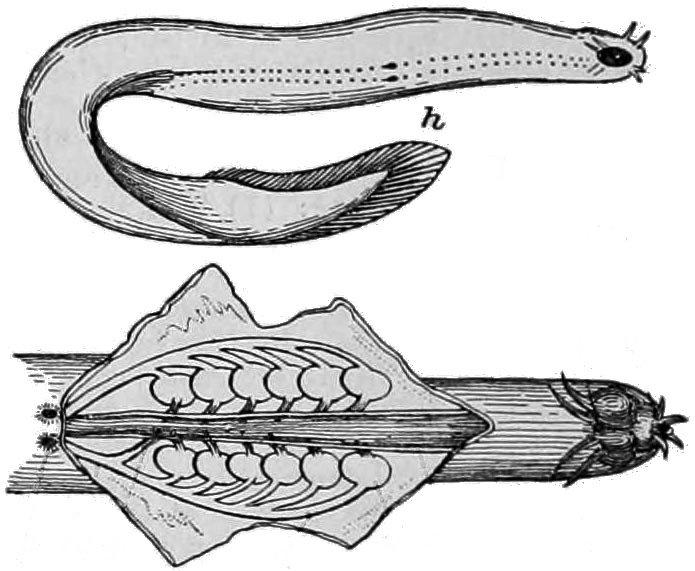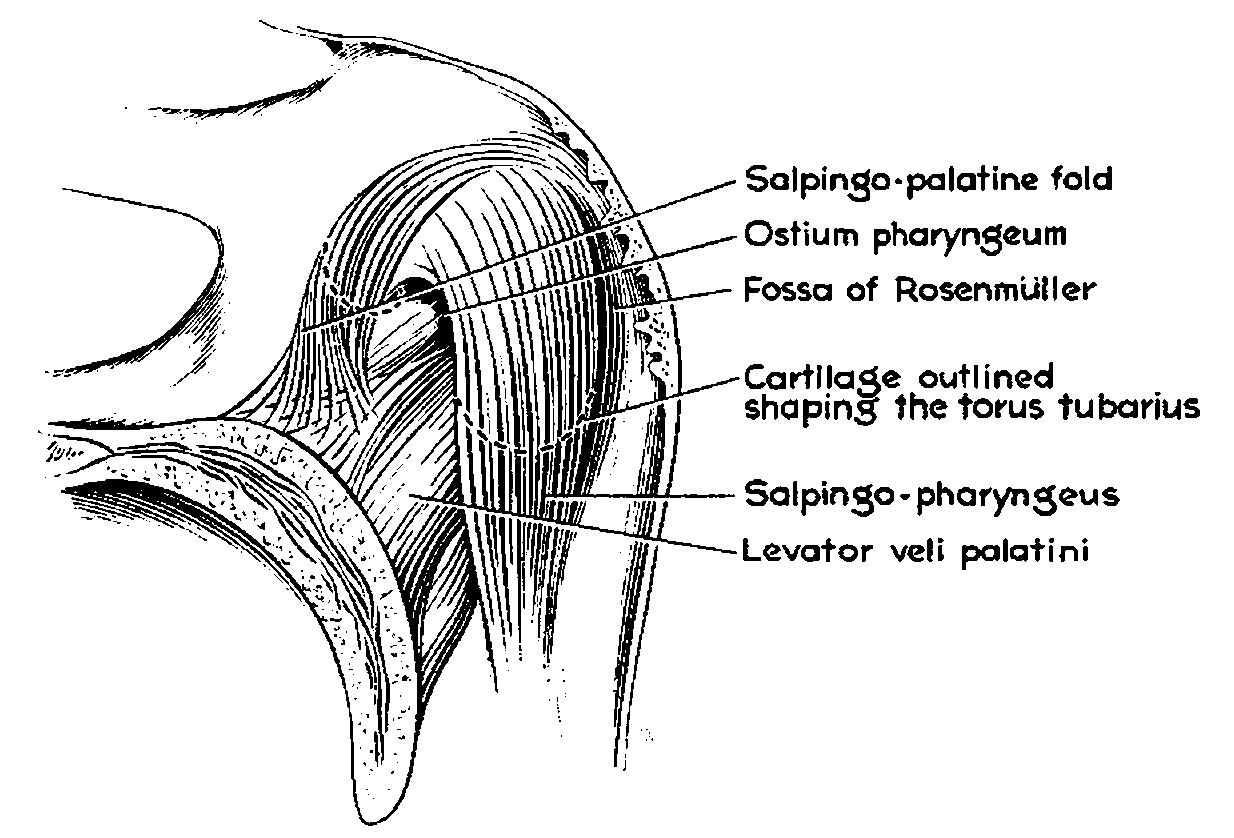|
Galeaspida
Galeaspida (from Latin, 'Helmet shields') is an extinct taxon of jawless marine and freshwater fish. The name is derived from ''galea'', the Latin word for ''helmet'', and refers to their massive bone shield on the head. Galeaspida lived in shallow, fresh water and marine environments during the Silurian and Devonian times (430 to 370 million years ago) in what is now Southern China, Tibet and Vietnam. Superficially, their morphology (biology), morphology appears more similar to that of Heterostraci than Osteostraci, there being currently no evidence that the galeaspids had paired fins. A galeaspid ''Tujiaaspis vividus'' from the Silurian period of China was described in 2022 as having a precursor condition to the form of paired fins seen in Osteostraci and gnathostomes. Earlier than this, Galeaspida were already in fact regarded as being more closely related to Osteostraci, based on the closer similarity of the morphology of the braincase. Morphology The defining characterist ... [...More Info...] [...Related Items...] OR: [Wikipedia] [Google] [Baidu] |
Eugaleaspidiformes
Eugaleaspidiformes (from Latin, "Helmet shield shapes") is an extinct order of jawless marine and freshwater fish, which lived in East Asia East Asia is a geocultural region of Asia. It includes China, Japan, Mongolia, North Korea, South Korea, and Taiwan, plus two special administrative regions of China, Hong Kong and Macau. The economies of Economy of China, China, Economy of Ja ... from the Telychian to the Lower Devonian period. The order was first named by Lui in 1965. Examples *'' Anjiaspis'' *'' Dunyu'' *'' Falxcornus'' *'' Nochelaspis'' *'' Qingshuiaspis'' *'' Shuyu'' *'' Xitunaspis'' *'' Yongdongaspis'' References Galeaspida Early Devonian extinctions Prehistoric jawless fish orders {{paleo-jawless-fish-stub ... [...More Info...] [...Related Items...] OR: [Wikipedia] [Google] [Baidu] |
Heterostraci
Heterostraci (Ancient Greek, ἕτερος+ὄστρακον "those [with] a different shell" [-i is pl. of -us]) is an extinct subclass (biology), subclass of Pteraspidomorphi, pteraspidomorph, ostracoderm, jawless vertebrate that lived primarily in Marine (ocean), marine and estuary environments. Heterostraci existed from the mid-Ordovician to the conclusion of the Devonian. Description and anatomy The heterostracans differed from other Paleozoic agnathan taxa both in the arrangement and histology of their scales. Most heterostracans had two plates which form a large dorsal shield and a large ventral shield, and had series of scales arranged in various patterns on the sides of their bodies, the exact pattern differing from one group to another. In a few primitive forms, such as ''Lepidaspis'', the dorsal and ventral shields are composed of a mosaic of tiny scales. In most other known forms, though, these tiny scales have fused together to form the shield-plates. The scale ... [...More Info...] [...Related Items...] OR: [Wikipedia] [Google] [Baidu] |
Fish
A fish (: fish or fishes) is an aquatic animal, aquatic, Anamniotes, anamniotic, gill-bearing vertebrate animal with swimming fish fin, fins and craniate, a hard skull, but lacking limb (anatomy), limbs with digit (anatomy), digits. Fish can be grouped into the more basal (phylogenetics), basal jawless fish and the more common jawed fish, the latter including all extant taxon, living cartilaginous fish, cartilaginous and bony fish, as well as the extinct placoderms and acanthodians. In a break to the long tradition of grouping all fish into a single Class (biology), class (Pisces), modern phylogenetics views fish as a paraphyletic group. Most fish are ectotherm, cold-blooded, their body temperature varying with the surrounding water, though some large nekton, active swimmers like white shark and tuna can hold a higher core temperature. Many fish can communication in aquatic animals#Acoustic, communicate acoustically with each other, such as during courtship displays. The stud ... [...More Info...] [...Related Items...] OR: [Wikipedia] [Google] [Baidu] |
Olfaction
The sense of smell, or olfaction, is the special sense through which smells (or odors) are perceived. The sense of smell has many functions, including detecting desirable foods, hazards, and pheromones, and plays a role in taste. In humans, it occurs when an odor binds to a receptor within the nasal cavity, transmitting a signal through the olfactory system. Glomeruli aggregate signals from these receptors and transmit them to the olfactory bulb, where the sensory input will start to interact with parts of the brain responsible for smell identification, memory, and emotion. There are many different things which can interfere with a normal sense of smell, including damage to the nose or smell receptors, anosmia, upper respiratory infections, traumatic brain injury, and neurodegenerative disease. History of study Early scientific study of the sense of smell includes the extensive doctoral dissertation of Eleanor Gamble, published in 1898, which compared olfactory to ... [...More Info...] [...Related Items...] OR: [Wikipedia] [Google] [Baidu] |
Dorsum (biology)
Standard anatomical terms of location are used to describe unambiguously the anatomy of humans and other animals. The terms, typically derived from Latin or Greek roots, describe something in its standard anatomical position. This position provides a definition of what is at the front ("anterior"), behind ("posterior") and so on. As part of defining and describing terms, the body is described through the use of anatomical planes and axes. The meaning of terms that are used can change depending on whether a vertebrate is a biped or a quadruped, due to the difference in the neuraxis, or if an invertebrate is a non-bilaterian. A non-bilaterian has no anterior or posterior surface for example but can still have a descriptor used such as proximal or distal in relation to a body part that is nearest to, or furthest from its middle. International organisations have determined vocabularies that are often used as standards for subdisciplines of anatomy. For example, '' Terminolog ... [...More Info...] [...Related Items...] OR: [Wikipedia] [Google] [Baidu] |
Pharynx
The pharynx (: pharynges) is the part of the throat behind the human mouth, mouth and nasal cavity, and above the esophagus and trachea (the tubes going down to the stomach and the lungs respectively). It is found in vertebrates and invertebrates, though its structure varies across species. The pharynx carries food to the esophagus and air to the larynx. The flap of cartilage called the epiglottis stops food from entering the larynx. In humans, the pharynx is part of the Digestion, digestive system and the conducting zone of the respiratory system. (The conducting zone—which also includes the nostrils of the Human nose, nose, the larynx, trachea, bronchus, bronchi, and bronchioles—filters, warms, and moistens air and conducts it into the lungs). The human pharynx is conventionally divided into three sections: the nasopharynx, oropharynx, and laryngopharynx (hypopharynx). In humans, two sets of pharyngeal muscles form the pharynx and determine the shape of its lumen (anatomy), ... [...More Info...] [...Related Items...] OR: [Wikipedia] [Google] [Baidu] |
Gill Chamber
A gill () is a respiratory organ that many aquatic organisms use to extract dissolved oxygen from water and to excrete carbon dioxide. The gills of some species, such as hermit crabs, have adapted to allow respiration on land provided they are kept moist. The microscopic structure of a gill presents a large surface area to the external environment. Branchia (: branchiae) is the zoologists' name for gills (from Ancient Greek ). With the exception of some aquatic insects, the filaments and lamellae (folds) contain blood or coelomic fluid, from which gases are exchanged through the thin walls. The blood carries oxygen to other parts of the body. Carbon dioxide passes from the blood through the thin gill tissue into the water. Gills or gill-like organs, located in different parts of the body, are found in various groups of aquatic animals, including molluscs, crustaceans, insects, fish, and amphibians. Semiterrestrial marine animals such as crabs and mudskippers have gill chambers ... [...More Info...] [...Related Items...] OR: [Wikipedia] [Google] [Baidu] |
Hagfish
Hagfish, of the Class (biology), class Myxini (also known as Hyperotreti) and Order (biology), order Myxiniformes , are eel-shaped Agnatha, jawless fish (occasionally called slime eels). Hagfish are the only known living Animal, animals that have a skull but no vertebral column, although they do have rudimentary vertebrae. Hagfish are marine animal, marine predators and scavengers that can defend themselves against other larger predators by releasing copious amounts of slime coat, slime from mucous glands in their skin. Although their exact relationship to the only other extant taxon, living group of Agnatha, jawless fish, the lampreys, was long the subject of controversy, genetic evidence suggests that hagfish and lampreys are more closely related to each other than to jawed vertebrates, thus forming the superclass Cyclostomi. The oldest-known stem group hagfish are known from the Pennsylvanian (geology), Late Carboniferous, around Moscovian (Carboniferous), 310 million years ... [...More Info...] [...Related Items...] OR: [Wikipedia] [Google] [Baidu] |
Nasopharyngeal
The pharynx (: pharynges) is the part of the throat behind the mouth and nasal cavity, and above the esophagus and trachea (the tubes going down to the stomach and the lungs respectively). It is found in vertebrates and invertebrates, though its structure varies across species. The pharynx carries food to the esophagus and air to the larynx. The flap of cartilage called the epiglottis stops food from entering the larynx. In humans, the pharynx is part of the digestive system and the conducting zone of the respiratory system. (The conducting zone—which also includes the nostrils of the nose, the larynx, trachea, bronchi, and bronchioles—filters, warms, and moistens air and conducts it into the lungs). The human pharynx is conventionally divided into three sections: the nasopharynx, oropharynx, and laryngopharynx (hypopharynx). In humans, two sets of pharyngeal muscles form the pharynx and determine the shape of its lumen. They are arranged as an inner layer of longitudinal mu ... [...More Info...] [...Related Items...] OR: [Wikipedia] [Google] [Baidu] |
Duct (anatomy)
In anatomy and physiology, a duct is a circumscribed channel leading from an exocrine gland or organ. Types of ducts Examples include: Duct system As ducts travel from the acinus which generates the fluid to the target, the ducts become larger and the epithelium becomes thicker. The parts of the system are classified as follows: Some sources consider "lobar" ducts to be the same as "interlobar ducts", while others consider lobar ducts to be larger and more distal from the acinus. For sources that make the distinction, the interlobar ducts are more likely to classified with simple columnar epithelium (or pseudostratified epithelium), reserving the stratified columnar for the lobar ducts. File:Gray1025.png, Section of submaxillary gland of kitten. Duct semidiagrammatic. X 200. File:Gray1173.png, Section of portion of mamma. Intercalated duct The intercalated duct, also called intercalary duct (ducts of Boll), is the portion of an exocrine gland leading directly ... [...More Info...] [...Related Items...] OR: [Wikipedia] [Google] [Baidu] |






